“Reflections are everywhere and can make a wonderful subject for a painting,” says Catherine Hillis. “They can be found in rain puddles, windows, mirrors, on tabletops and inside and outside of glass objects. Look around you and you’ll see reflections are even found within shadows.
“Painting reflections is not as hard as you may think, as long as you paint what you actually see. Having a good subject to paint from helps, too.
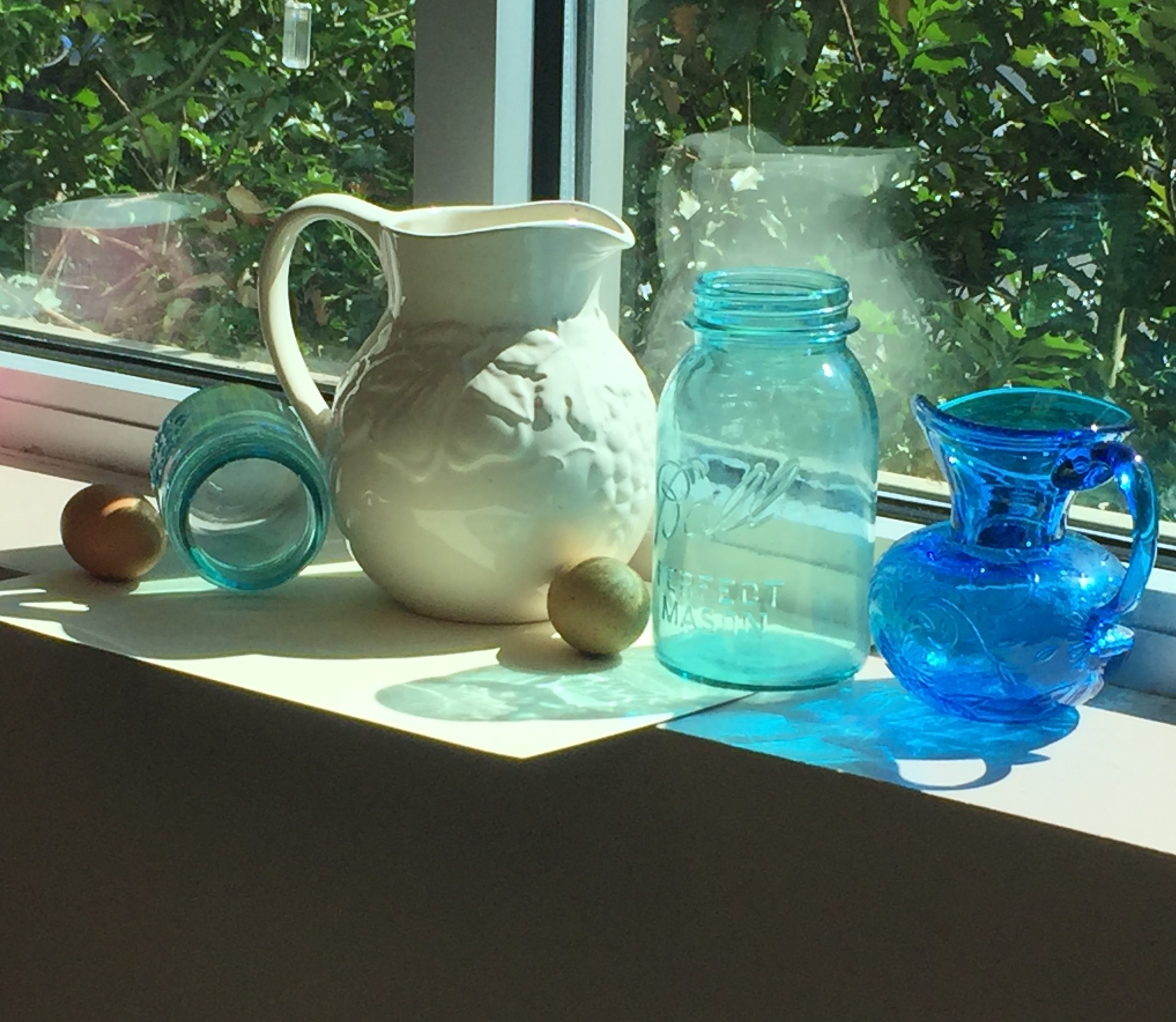
“Here, I’ve set up old Ball Jars with some glassware that belonged to my grandmother. I paint them often because they provide me with good memories. Taking a series of photographs provide a good reference.
Watercolor Tutorial
STEP 1
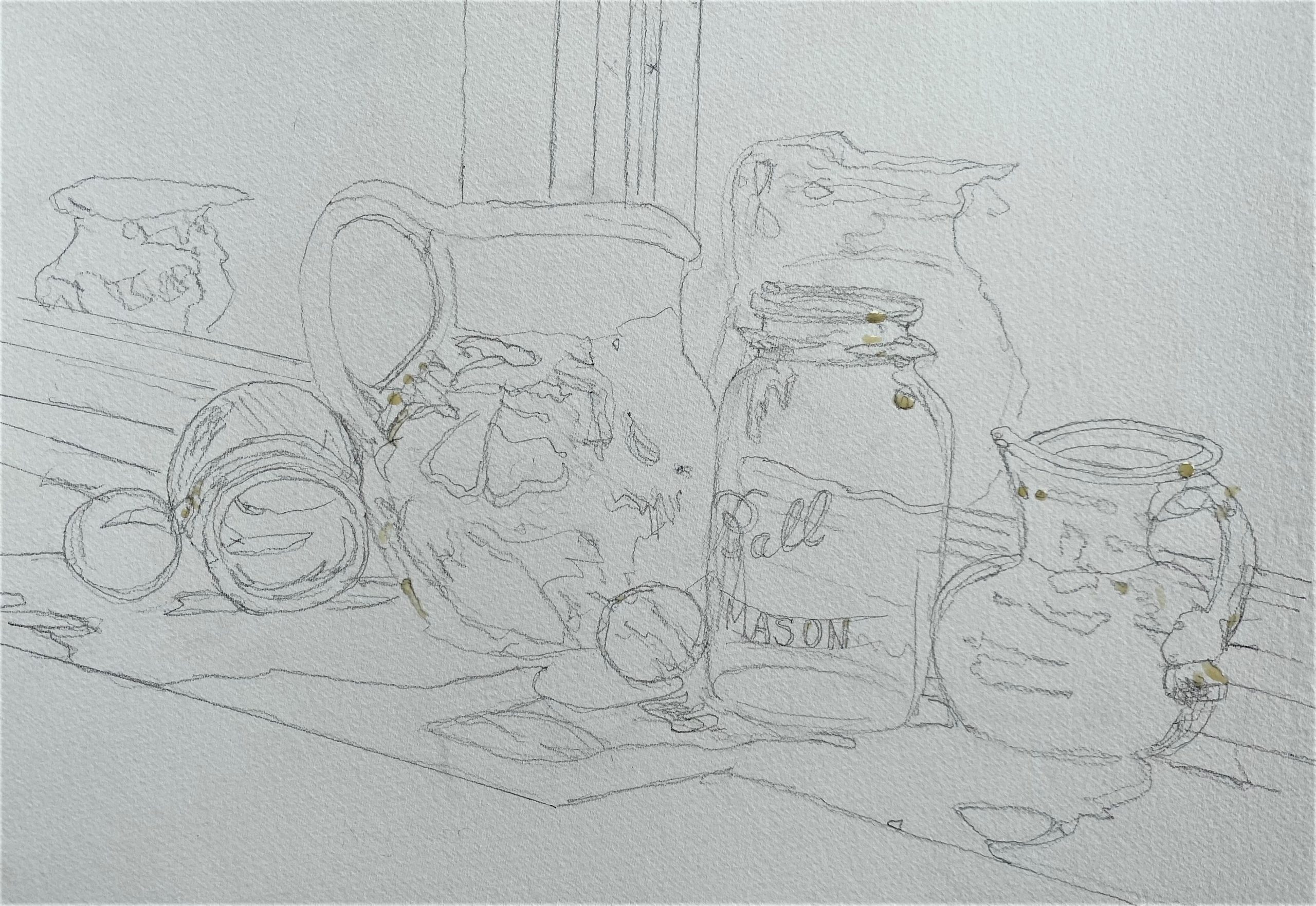 “Taking time to draw a small sketch will be worth the effort. You may be surprised at how dark some values really are in cast shadows and reflections. An accurate drawing of your subject on your watercolor paper is a must. Your drawing may take more time than the painting. Factory-made glass must be drawn straight and true, and appear to sit flat on a surface. Don’t rely on what you “think” reflections look like. Instead, blow up sections of your photograph, observe and study the abstract shapes that are there.
“Taking time to draw a small sketch will be worth the effort. You may be surprised at how dark some values really are in cast shadows and reflections. An accurate drawing of your subject on your watercolor paper is a must. Your drawing may take more time than the painting. Factory-made glass must be drawn straight and true, and appear to sit flat on a surface. Don’t rely on what you “think” reflections look like. Instead, blow up sections of your photograph, observe and study the abstract shapes that are there.
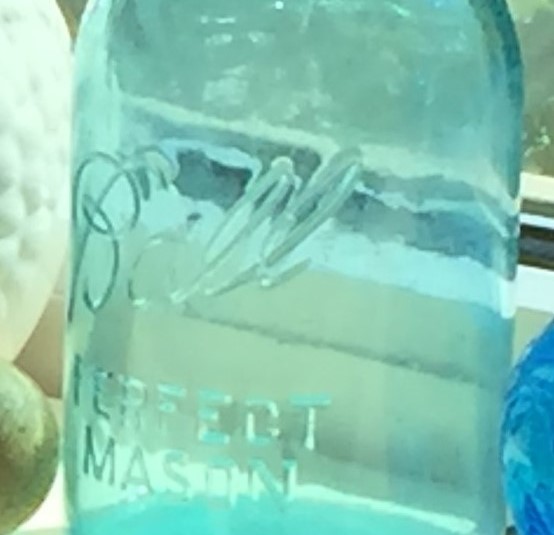 “Observe this close-up of the Ball Jar. Note the abstract shapes inside the glass. See how the background lines of the window are refracted, curving behind the glass. The lettering follows a curved line that is parallel to the mouth and the base of the jar. See how each letter is composed of many different colors.
“Observe this close-up of the Ball Jar. Note the abstract shapes inside the glass. See how the background lines of the window are refracted, curving behind the glass. The lettering follows a curved line that is parallel to the mouth and the base of the jar. See how each letter is composed of many different colors.
“Before painting, you may need to apply masking fluid in a few areas. Don’t overdo it. The background is inconsequential; there’s no need to add details. The background is a vehicle for reflections!
Here are a few ways to check your drawing for accuracy
- Look at your drawing in a mirror. Take your pencil and eraser with you to make corrections.
- Look at your drawing upside down and sideways to be sure surface edges and sides are parallel and straight.
- Take a photograph of your drawing and study it on your computer or phone screen.
Step 2
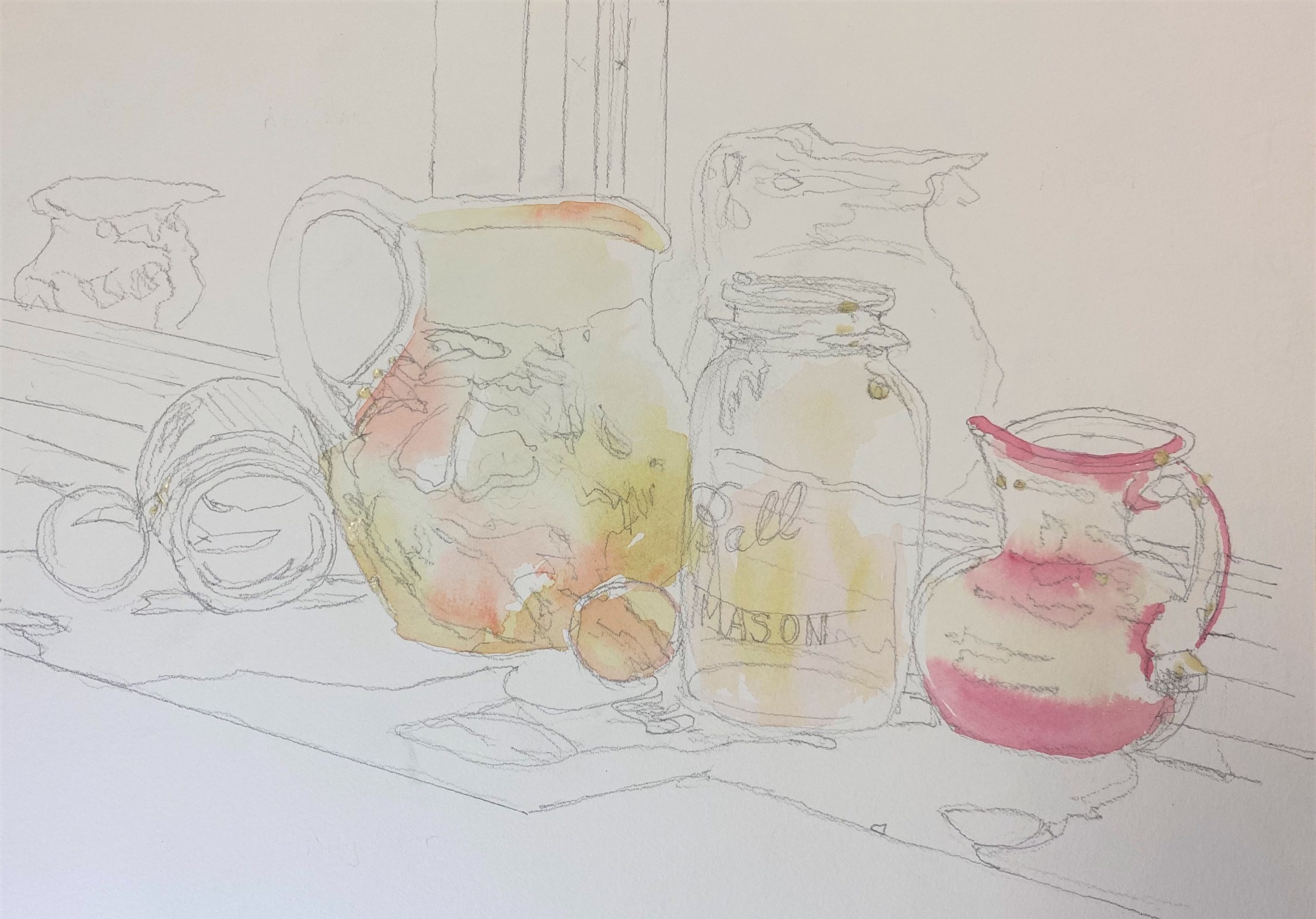 “Once you have an accurate drawing that includes the abstract shapes in the glass objects and reflections, you can begin painting. I like to build my work with wet-on-wet glazes, starting with warm tones first. Warm tones will appear through later transparent layers. The more layers you paint, the richer the color will be. Always be sure to allow layers to dry thoroughly. This cannot be emphasized enough.
“Once you have an accurate drawing that includes the abstract shapes in the glass objects and reflections, you can begin painting. I like to build my work with wet-on-wet glazes, starting with warm tones first. Warm tones will appear through later transparent layers. The more layers you paint, the richer the color will be. Always be sure to allow layers to dry thoroughly. This cannot be emphasized enough.
Depending on your preferences, warm colors might include Hansa Yellow, Aureolin, Perinone Orange, Raw Sienna, Yellow Ochre, Rose or Permanent Alizarin Crimson.
Step 3
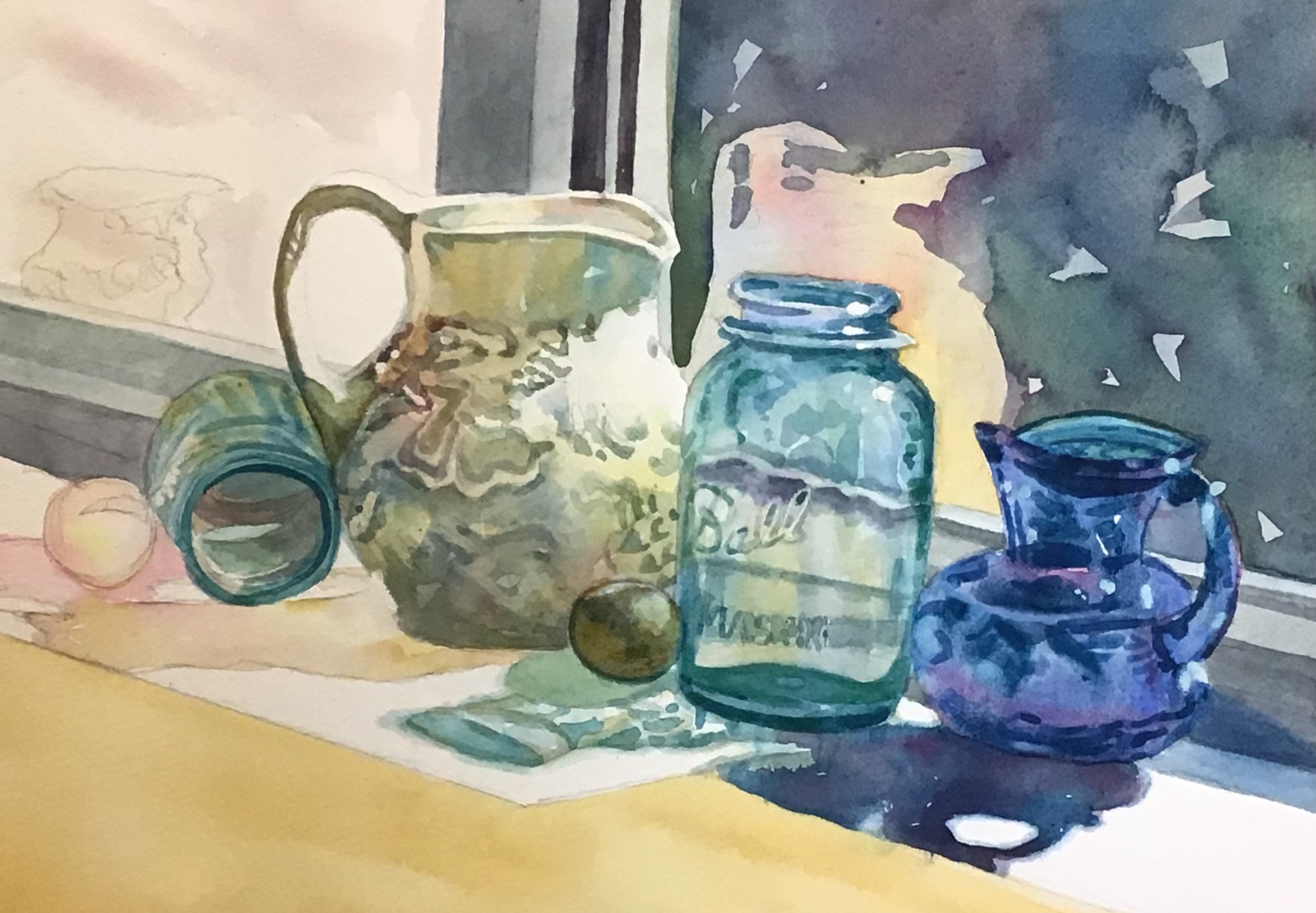 “After painting three or four layers of warm glazes, I begin incorporating both warm and cool colors onto wet areas. I wet one jar at a time, working through middle values, and painting shadows in as well. I enjoy using all my blues, including Cobalt, Ultramarine, Cerulean, Peacock Blue, Turquoise, Cobalt Turquoise, Phthalo Green and Phthalo Blue. This is a time to bring out lesser used paints and have a little fun.
“After painting three or four layers of warm glazes, I begin incorporating both warm and cool colors onto wet areas. I wet one jar at a time, working through middle values, and painting shadows in as well. I enjoy using all my blues, including Cobalt, Ultramarine, Cerulean, Peacock Blue, Turquoise, Cobalt Turquoise, Phthalo Green and Phthalo Blue. This is a time to bring out lesser used paints and have a little fun.
Final Step
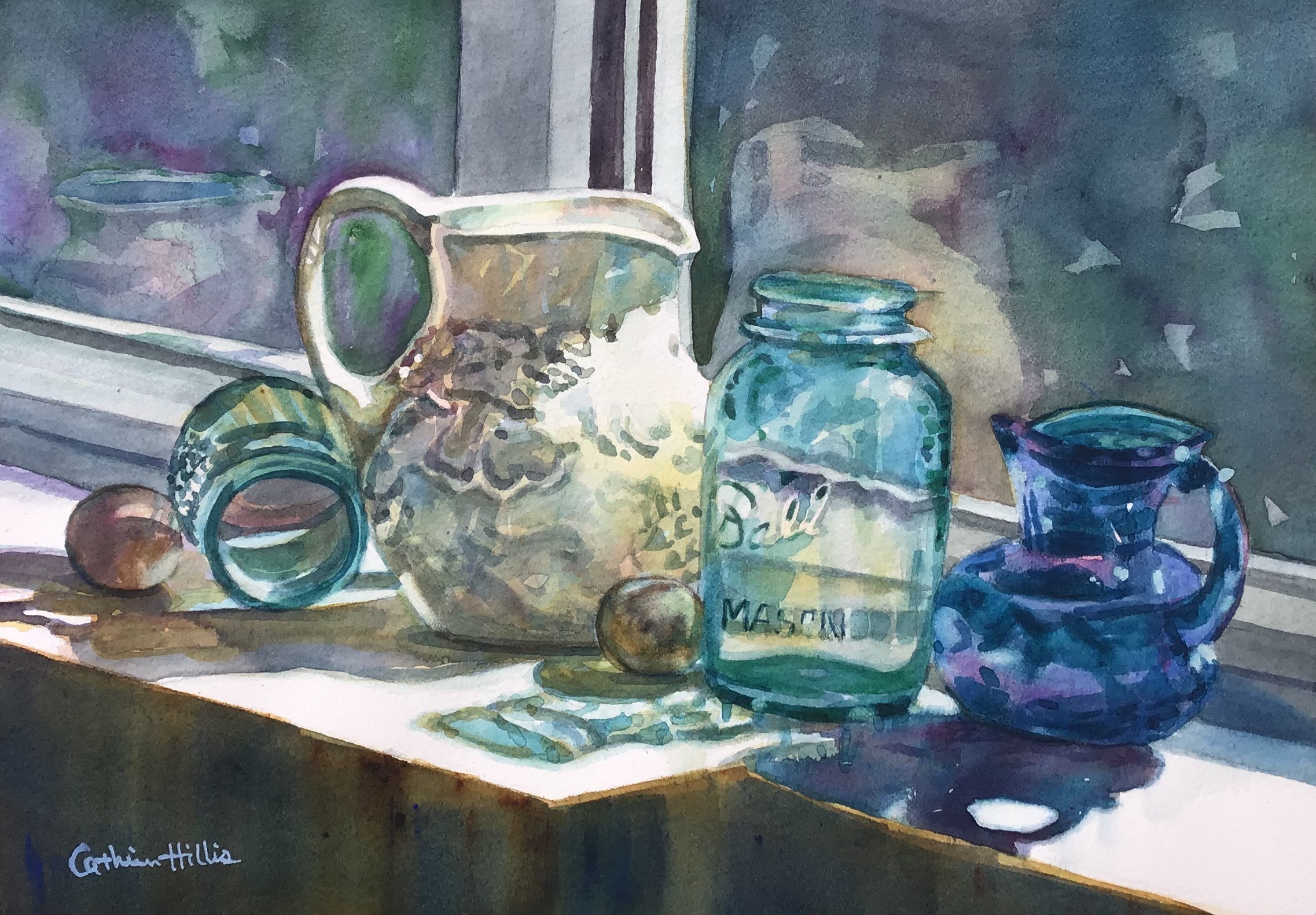
“Dark lines and edges are painted towards the end. Lettering is carefully painted with a small brush, taking care to really observe those letters in a close up look at my reference photograph. I take photos of the painting, looking at it on my computer screen for flaws. I turn the painting upside down to check for areas that need to be tweaked. A few final reflections are lifted with a flat brush after all glazes are dried and masking is removed and edges softened.
“Cast shadows and reflections are major players in the narrative of light. These shapes are as important as any other shape in your painting. Learning to observe the abstract shapes in and around reflections is an opportunity to grow as an artist. Painting reflections isn’t hard, but it does require some careful observation, a little bit of ‘ignoring those voices in your head,’ and a little patience.”
In Watercolor Realism – Silver & Crystal, Laurin Mccracken demonstrates the techniques behind his award-winning work by showing you how to paint a still life of silver and crystal with pears on fabric, plus offers key strategies on how to mix a deep black, and how to apply it successfully.

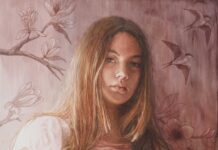
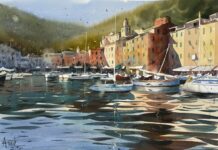





Seeing Catherine’s painting of those lovely old jars reminds me of very worthwhile classes with her a few years ago. I have some antique jars, too. Love to show them off with daisies, black eyed Susans, goldenrod…Can’t begin to match her matchless paintings of them.
Thank you so much for the demo on reflections. i especially want to learn how to paint glass objects. This is a wonderful step by step to get me started.
thank you for sharing your expertise.
Also loved the comments on painting glass and reflections. I, too have a collection of antique and old glass and love using them in my paintings. Besides watercolor, I also challenge myself in oil and recently gouache. Thank you!